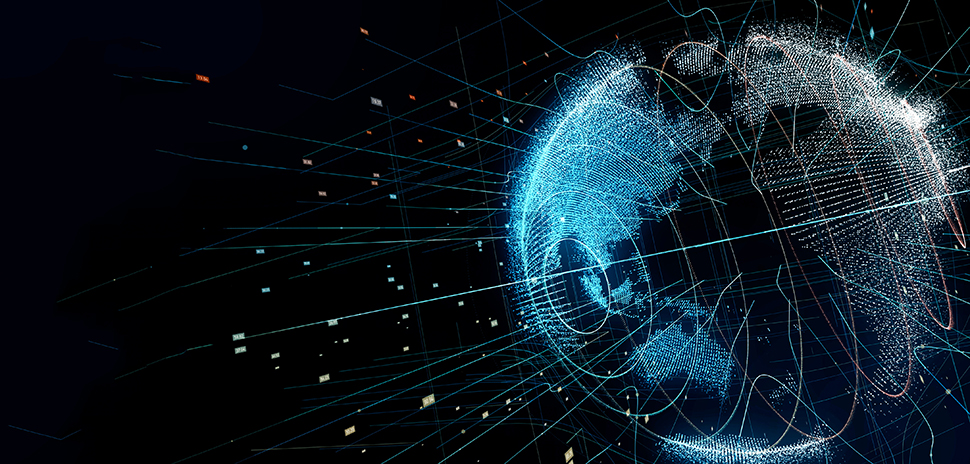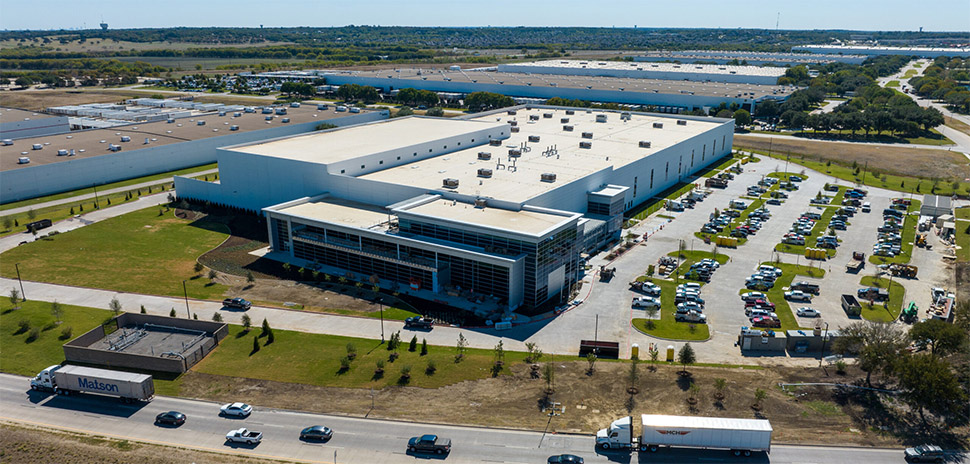Hypergiant has continued making major moves, and this time, they’re out of this world.
Hypergiant Galactic Systems, a division of Hypergiant Industries focused on AI-driven aerospace and astronautic software for the space industry, announced a partnership with the Arch Mission Foundation, a nonprofit that curates and maintains a “backup of planet Earth.” Together, the two companies plan to launch a series of satellites that would serve as the first relay points in the Interplanetary Internet (IPN).
Since coming out of stealth a little over a year ago, Texas-based Hypergiant Industries has made a series of announcements to coincide with its innovative approach to the AI marketplace.
In November, Hypergiant Sensory Sciences, which uses spatial computing to bring the power of AI to understanding sensory data, was announced as an independent company with organic connections to Hypergiant Industries. Then, in December, Hypergiant Space Age Solutions, the commercial services arm of Hypergiant Industries, acquired a custom software development studio for flagship brands. And most recently, Hypergiant Industries acquired Satellite & Extraterrestrial Operations & Procedures (SEOPS) and launched Hypergiant Galactic Systems.
“What space affords us is the ability to look back at Earth—an entirely new point of view that holds invaluable insights,” Hypergiant’s Dallas-based CEO, Ben Lamm, previously told Dallas Innovates. “As an AI industrial complex, we bring the ability to not only develop the hardware through our R&D capabilities but apply the machine learning and AI software that has already been proven across industries. We’re creating the entire value chain of space, and from it, creating immeasurable value for our customers in the public and private sectors.”
What does the partnership between Hypergiant Galactic Systems and the Arch Mission Foundation mean?
Hypergiant Galactic Systems and Arch Mission plan to deploy the satellites to Lagrangian orbital locations around the solar system to prepare for an eventual IPN.
An IPN—previously researched by NASA—would allow for explorers to have instant communication in space, giving those of us on Earth more information about other planets. According to Axios, IPN has the potential to solve any future communication or data transfer challenges, and could serve as information storage for deep space explorers or any extraterrestrial life.
A Lagrangian point in space, according to the Encyclopaedia Britannica, is where a small body, under the gravitational influence of two large ones, will remain approximately at rest, relative to the others.
In order for an IPN to actually take place, satellites at the various Lagrangian points have to be able to autonomously, instantly locate other nodes around the solar system. This allows for data streams to be relayed efficiently to other destinations.
“It’s time to move beyond the research phase and actually start testing this in the real world,” Lamm said in a statement. “We’re going to begin to test and roll-out a commercial-grade Interplanetary Internet, an essential enabling infrastructure for all future space activity. We are increasing the speed at which humanity will become an interplanetary species and we need the infrastructure to support it.”
In late 2020, a U-class spacecraft (a miniature satellite) is expected to be the first launch of the network.
The first satellite will use Hypergiant’s Smart Satellite Platform, a new AI-driven satellite operating system that, when in orbit, facilitates autonomous navigation and decision-making. On it will be Arch Mission’s first Lagrange Library, which is part of its Billion Year Archive project: a network of data archives that could preserve, connect, and share humankind’s solar system knowledge.
“Our partnership with Hypergiant and their smart satellite platform in particular allows us to send updates continuously from Earth, and also for that data to be retrievable from Earth in the case of a cataclysmic event,” said Nova Spivack, co-founder of the Arch Mission Foundation, in a statement. “By placing these backups in Lagrangian points, they can remain forever and easily be discovered in the future. With Hypergiant, we are developing AI that can intelligently communicate the knowledge on these satellites back to Earth if it is ever needed.”
Following the first launch is another planned for 2021. And, nodes will be sent on a continuous basis to locations around the solar system.
The first node in the IPN will be a proof-of-concept that uses the Arch Mission Billion Year Archive as a test dataset. As more nodes are added to a multitude of Lagrangian locations, all datasets will be able to be stored, forwarded, and synchronized.
Hypergiant said in addition to an AI operating system, its first node will include blockchain-powered data synchronization and special sensors that can scan space for undetected asteroids and survey debris at the Lagrangian point.
“The mission of Hypergiant Galactic Systems is to bring the power of artificial intelligence to the space industry,” Lamm said. “The AI platform we are building is a best-in-class system for autonomous satellite deployment, navigation, communication, and sensing.”
![]()
Get on the list.
Dallas Innovates, every day.
Sign up to keep your eye on what’s new and next in Dallas-Fort Worth, every day.



































































